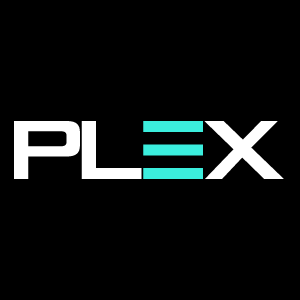

Now Available!
Get your copy of the 7th Annual State of Smart Manufacturing and hear from 300+ manufacturers in this new survey report!
Subscribe to Our Blog
For a monthly digest of expert insights, data points, and tips like the ones in this article.
Forecasting and Demand Planning in the Age of Machine Learning
Supply Chain Management, Manufacturing IntelligenceCompanies use a variety of tools to assess the current state of their business and predict where it is headed. By “reading the tea leaves”, planners attempt to ensure correct stock levels, optimize inventory levels and inventory value, and provide a framework for staffing and operations.
But the complexity of modern-day supply chains requires that forecasting and planning be more than just reading the leaves. It must be a well-thought-out and dynamic system.
Many manufacturers still utilize spreadsheets, disparate computer software, and segmented, siloed decision-making processes for managing their supply chains. As a result, the critical understanding of how forecasting and demand planning should be used is clouded, making the process more difficult and less efficient.
Defining Forecasting and Demand Planning
This reliance on inefficient systems has often led to the terms forecasting and demand planning being used interchangeably. Despite being interrelated, the two are different processes. Grouping them together indicates a failure to understand that they are part of a structure that stretches vertically through an optimized planning system.
- Forecasting — Forecasting is essentially a prediction of demand, based on available current and historical data. It attempts to predict what finished goods are needed based on these variables alone. It can be used in decision-making to understand what is likely or possible in the future. Forecasting is an input for demand planning that helps create budgets, operational plans, and strategies to minimize uncertainty.
- Demand Planning — Demand planning incorporates forecasts into a broader analysis of business needs and is where human input is applied. It includes a comprehensive analysis of both quantitative and qualitative demand overall. Depending on the type of products offered in a company’s portfolio, it may include both independent demand as well as dependent demand. The demand plan is used to develop strategies to mitigate uncertainty and develop a plan that affects distribution, inventory, and operations.
Another way to look at forecasting and demand planning is to consider their purposes in relation to business strategy. Forecasting is an important part of several variables used in demand planning. And demand planning is a holistic review of demand that is part of a company’s overall Sales and Operations Planning (S&OP).
Limitations of Forecasting
Statistical forecasting should not be used alone to predict demand. Doing so creates several disadvantages:
- It can’t see the big picture. Even though it involves mathematical equations to parse historical data, that doesn’t necessarily mean the data it is parsing is enough to make the right decision. It is also highly dependent on history. If a demand pattern is not reflected in history or in similar products or categories, there is no way forecasting will predict what it does not know.
- It involves many open-ended assumptions. By using statistical forecasting alone, assumptions must be made that conditions will remain the same over time. In highly volatile markets this immediately makes using statistical analysis and even machine learning inadequate. Even in stable markets, the possibility of disruptions such as labor unrest, natural disasters, and pandemics, introduces variables that statistical analysis cannot provide.
- Statistical planning is time consuming and costly. Because the requirements to build the mathematical model involve a lot of data, a great deal of time and effort must be spent to amass these data points. This can throw off the quality of the forecast if data points are missing or data input is wrong based on human errors. The advent of machine learning helps a demand planner address these challenges, but even machine learning can’t solve for poor data, lack of data, and other factors where patterns simply can’t be correlated.
The Need for Demand Planning
To remove the disadvantages posed by statistical forecasting alone, companies can utilize a disciplined and collaborative demand planning system. This involves building accurate statistical forecasts with the help of machine learning, as well as quantitative and qualitative analysis. It also includes identifying and systemizing external information such as:
- Sales Data
- Trend Analysis
- Inventory Optimization
- Capacity Analysis
- Distribution Factors
While this sounds like a daunting list, it’s easier than ever to include these and other variables when implementing a demand planning system. Through the use of demand planning software, these variables, as well as the quality of the statistical forecast, can be operationalized under one platform.
Modern Demand Planning
Machine learning acts as a data collection assistant and contributes a richer and more sophisticated level of input for demand planning software to work with. Manufacturers can now leverage a volume of data that could not be managed by human analysis alone. This allows data aggregation from many sources to improve forecasting accuracy. When using demand planning software, data is easily visualized, and advanced algorithms can provide analysis of demand with a high level of accuracy, speed, and volume not possible before.
Demand planning software includes tools such as ABC analysis, “what-if” scenario building, and inventory optimization using large data sets and near-real-time data inputs to deliver an accurate picture of demand. The software also builds collaboration by improving communication with unsiloed data that is accessible and actionable by those who need it.
Demand and supply planning software offered by Plex DemandCaster offers businesses a comprehensive platform that advances demand planning from a reactive to a proactive footing. It empowers companies to move away from the time consuming and spreadsheet-laden practice of statistical analysis — and, too often, guesswork and hunches. Instead, it creates an environment where state-of-the-art software delivers accurate, reliable demand plans and frees up more time for value-added and strategic focus.


